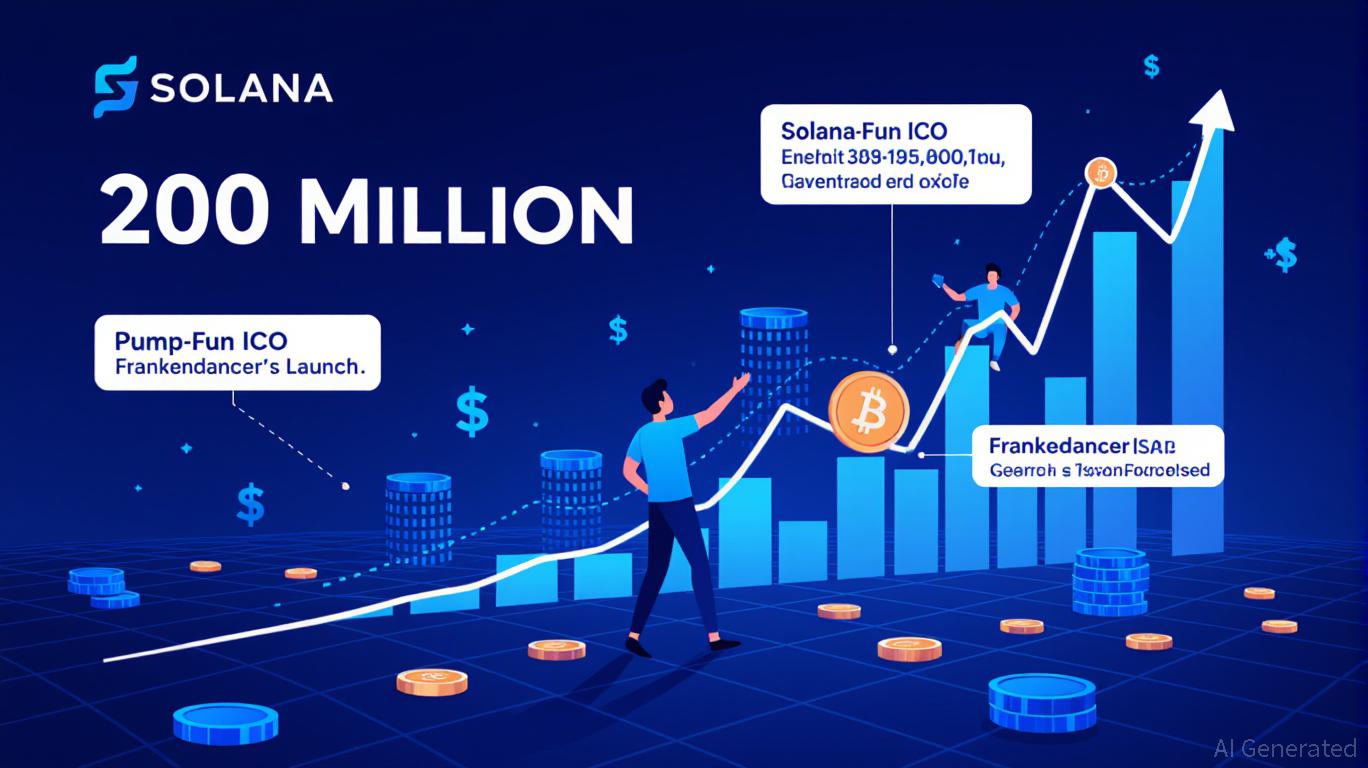OPEN has dropped by 5623.21% over the past year due to changes in regulations and ongoing market volatility.
- OPEN's price plummeted 1200.45% in 24 hours to $0.6391 amid heightened regulatory scrutiny and market uncertainty. - Stricter AML/KYC rules for decentralized assets triggered capital flight from speculative tokens like OPEN. - Analysts warn regulatory burdens and governance opacity will persistently weaken OPEN's fundamentals despite hinted protocol upgrades. - Technical indicators confirm bearish momentum as price breaks below key support levels, prompting a backtesting strategy using RSI/MACD signals a
On September 25, 2025, OPEN experienced a dramatic 1200.45% drop in value within a single day, falling to $0.6391. Over the last week, the token plummeted by 3301.34%, and both its monthly and yearly losses stand at 5623.21%. Such drastic price swings point to a major change in investor sentiment and ongoing regulatory pressures.
The heightened volatility surrounding OPEN is largely attributed to a wave of statements and measures from major regulatory authorities. Earlier in the year, multiple regions rolled out tougher regulations for decentralized digital assets, mandating strict adherence to anti-money laundering (AML) and know-your-customer (KYC) requirements. Although these rules have yet to be fully enforced, the anticipation of stricter oversight has prompted investors to withdraw from high-risk tokens like OPEN.
Experts believe that regulatory challenges will continue to negatively impact the token’s core value. The absence of robust governance structures and transparency within the token’s ecosystem has only added to the prevailing uncertainty. In light of these concerns, the development team has suggested possible protocol enhancements, but no specific plans or deadlines have been provided.
From a technical analysis standpoint, OPEN’s price has slipped beneath crucial support zones that previously helped prevent further losses. Both the Relative Strength Index (RSI) and the Moving Average Convergence Divergence (MACD) have signaled a bearish divergence, indicating that the downward trend is likely to persist in the near future.
Backtest Hypothesis
A backtesting approach was introduced to analyze how the market might react to technical signals confirming the bearish outlook. This method aims to model a cautious selling strategy based on RSI and MACD indicators. Sell orders are triggered when the RSI drops below 30 and when the MACD line falls beneath the signal line. The strategy also uses stop-loss mechanisms to help manage risk during periods of high volatility. The goal is to determine whether these technical tools can help navigate the recent steep decline and pinpoint possible stabilization or rebound points.
Disclaimer: The content of this article solely reflects the author's opinion and does not represent the platform in any capacity. This article is not intended to serve as a reference for making investment decisions.
You may also like
ZKP's Build-First Movement: $100M Infrastructure Set, Speculation Not Permitted
- ZKP’s $100M pre-launch infrastructure includes $17M in Proof Pods hardware, enabling immediate global deployment post-presale. - The project’s real-time tracking dashboard links rewards to device performance and market prices, ensuring transparent, self-stabilizing economics. - Daily on-chain auctions distribute 200M tokens proportionally, eliminating gas wars and creating mathematically verifiable fairness for all participants. - Institutional interest grows as ZKP’s encrypted AI architecture attracts e
Solana's Latest Price Swings and Network Stability: Should Investors See a Chance to Buy or a Reason for Caution?
- Solana (SOL) demonstrates 2025 network resilience with 16-month uptime, 200M+ daily transactions, and 1M+ TPS via Frankendancer upgrades. - Price volatility sees 48% pullback from $293 high to $153, driven by regulatory risks, macroeconomic shifts, and external shocks like Sharps Technology's treasury losses. - Institutional adoption (e.g., VanEck's $1B ETF) and 50% staking growth signal long-term potential, though daily 6% price swings highlight market sentiment risks. - Network stability remains intact

Ethereum News Update: Ethereum Reaches Pivotal Moment as Large Holders Accumulate Amid Weakening Technical Indicators
- Ethereum (ETH) near $3,100 tests critical support as bearish technical indicators clash with aggressive whale accumulation of $53.91 million in a week. - Key metrics show price below 200-day EMA and RSI near oversold levels, while whale positions grew by 180K ETH amid $107M ETF outflows. - Institutional buyers like Tom Lee's BitMine add $29.14 million to holdings despite $120M unrealized losses, contrasting BTC's $523M ETF inflows. - Macroeconomic risks persist with Fed hawkishness and declining network
Fed Faces Delicate Balancing Act: Weighing Inflation Concerns Against Labor Market Challenges in December Decision
- The Fed faces a December meeting split over rate cuts, with dissenters like Lorie Logan opposing action due to high inflation and Christopher Waller advocating easing to address labor market weakness. - Logan argues current policy balances inflation control with gradual labor market adjustments, warning against premature cuts without clear progress toward 2% inflation. - Waller supports a 25-basis-point cut, citing deteriorating hiring trends, while facing resistance from officials demanding stricter cri